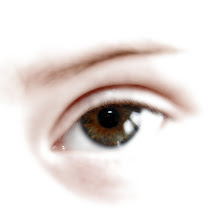
"These people have no shame," ISOC chairman Bill Evans said Monday. "Right before a big game or race, many of them will take a dose of affection, sometimes from a coach, other times from a family member. Competing players have even been known to exchange hugs during the competition itself."
Although insiders have long attested to widespread hug use among special athletes, the full scope of the problem was not understood until November 2004, when Carnegie Mellon's medical school published a study on hug use in the Clinical Journal Of Sport Medicine. According to the study, researchers found double-digit spikes in self-valuation, warm fuzziness, and smiles following even a single hug.
Evans said he "took one look at the numbers" and agreed to an internal investigation and an across-the-board review of hug-use policies.
"Hug users have an unfair advantage over the hug-free, as they are pumped up with confidence," Evans said. "In competitions relying on endurance, hugs serve to artificially heighten an athlete's stamina. For example, hug users may be as much as 65 percent more likely to excel at no-contact floor hockey than those who say no to hugs. Put simply, it's unethical."
Alpine skiing bronze medalist Lee Young-Suk, who has Down syndrome, appeared on a special edition of ABC's Primetime Live Tuesday and admitted to frequent use of performance-enhancing hugs.
"When my mommy [Jun Young-Suk] hugs me, it makes me feel like I'm the best and she loves me and I can win," Suk told Diane Sawyer. "I'm a winner!"
The emotions Suk described—euphoria, omnipotence, overall well-being—have been found to last for as little as five minutes or as long as several hours, depending upon the number and type of embraces administered.
Due to the short-burst effect of performance-enhancing hugs, testing for their presence is difficult.
"Currently, eyewitness sightings are the only reliable indicators of hug use," said ISOC regulator Peter Warner. "Unfortunately, hug use can occur anywhere—from the group home to the bleachers. We can't be in every team's van at all times."
In the search for hug abusers, regulators have screened hundreds of hours of Special Olympics videotape, hoping to catch huggers in the act. They are also relying on testimony from hug users such as Suk.
"Lee Young-Suk really stood his ground at first, saying he did not want to tattle on his friends," Warner said of the hug user. "We couldn't get him to give us any names until we promised him a trip to Dairy Queen."
Still, as Evans pointed out, hug use does not necessarily translate into better athletic performance. Over time, it may even serve as a hindrance.
"Once they get hooked, even if it isn't helping their game, these Olympians continue to crave the affection, accepting it as almost a consolation prize for their effort. Sometimes you see special athletes seeking hugs outside the realm of competition, just for the sake of hugging. This is where we get into really dangerous territory."




1 comment:
Come visit my blog when you get a chance. YOu've been tagged. And you still haven't "claimed" your blog award!
Post a Comment